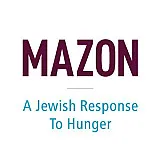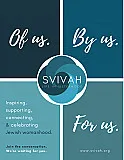Human Trafficking Today
Human Trafficking Today
Human trafficking is the practice of modern day slavery, and is one of the largest criminal indus- tries in the world, generating an estimated $32 billion per year. Approximately 27 million people are enslaved today and 800,000 people are trafficked across international borders each year (this number does not include those trafficked within a country’s borders). Fifty percent of those victims are children, and 80% are women and girls. While human trafficking is often thought of as solely an international problem, it occurs on a local level as well. An estimated 17,500 people are trafficked into the United States each year and an even greater number of United States citizens are trafficked within the country.
The Torah says that each one of us, every individual, is created “b’tzelem elokim,” in the image of God. How can this godly quality within each of us inspire us in our actions? What is our responsibility and our power in- herent in that gift of divine capacity? How can we use this divine potentiality within ourselves to address contemporary slavery?
We each have the power and the obligation to free today’s slaves with a “strong hand and outstretched arm.” What does the Haggadah mean by “an outstretched arm?” We must reach beyond ourselves, beyond the usual extent of our gaze. Our realm of influence, our chance to exert that divine capacity, is not an opportunity lurking in the distance—it is right here, within reach, just beyond us.
In the Haggadah, we see what would have been the continued plight of our forefathers had God not acted to take them out of Egypt. The practi- cal implications of the Exodus are far-reaching even until our own generation. Slavery does not end through hope and passivity, but by powerful action. Our action to end slavery is not only important for our own time but also for its ef- fects on future generations. This is our chance to shape the future.
Testimonial
“Jose Antonio Martinez and Francisco Martinez got sick of working 10 hours to make $15 after being promised $150 per day. Almost all their money in early 1999 went to their labor contractors for rent, food and their $750
smuggling fees. After picking tomatoes all day, they weren’t allowed to leave the roach-infested trailer they shared with 22 other workers west of Immokalee.
“You were locked up... you couldn’t stick your head out,” Francisco said. The floor had holes through which they saw snakes, and their mattresses were on the floor.
-From a case uncovered and prosecuted in Florida in 2003 - (http://www.palmbeachpost.com/moderndayslavery/content/moderndayslavery/reports/peonageblurbs1207.html) on March 2, 2010
Testimonial
“The Endangered Children of Northern Uganda” Ms. Grace Grall Akallo, spokesperson for World Vision, formerly abducted LRA child soldier testifying before the House International Relations, Subcommittee on Africa, Global Human Rights and International Opera- tions
April 26, 2006
My Story In October 1996, the LRA attacked St. Mary’s College, a girls’ boarding school in Aboke Town, in
the Apac District, in northern Uganda. They abducted 139 girls--including myself. I was 15-years-old at the time...
I was forcibly marched into southern Sudan. We walked for four days and four nights. In southern Sudan, the LRA had bases that were run and protected by forces allied with the Sudanese government in Khartoum. I, and the other girls captured with me, were trained to assemble and disassemble, clean and use guns. We were used as slave labor by the LRA and Sudanese government soldiers. We were forcibly given to senior LRA commanders as so-called “wives.” For seven months, I was held in captivity by the LRA, always looking for an opportunity to escape. I con- stantly prayed that God would allow me to see my family once more before I died. I desperately wanted to finish my education, but hope seemed distant. I saw two other children who had tried, unsuccessfully, to escape. They were brutally murdered in front of me as a warning. One night, we were forced to raid a village, and I was directed to help steal food and water. I fainted from thirst. I woke up hours later, buried alive in a shallow grave. The Ugandan soldiers, along with the SPLA (Sudan People’s Liberation Army) attacked the base of the LRA, allowing me a chance to escape. I walked for three days, living on soil and leaves before I found another group of children who had also escaped. I persuaded eight of them to join me, and we eventually found a group of villagers who took care of us, before helping us connect with the Ugandan army to return home. I escaped, alive, from the LRA, but five of my classmates died in captivity. The others gradually managed to escape over the past ten years; some are infected with HIV/AIDS; many of them have children by the com- manders who abused them. Ten years later, two of my friends are still held hostage by the LRA.
So I thank God for allowing me to see my family again. I thank Him for allowing me to continue on with my education. I went back to St. Mary’s to finish high school, and then I began studying at Uganda Christian University, in southern Uganda near the capital city, Kampala. I have since transferred to Gordon College in Boston, where I am now working on my undergraduate degree in Communications. When I finish my education I would like to work for one year and then continue on to graduate school to study International Relations and Conflict Resolution. I want to be part of the people struggling day and
night to try to bring peace in the world.
A Haggadah for Justice
- Introduction
- Commentary / Readings
- Bareich
- -- Ten Plagues
- Yachatz
- Maggid - Beginning
- -- Four Questions
- -- Four Children
- -- Exodus Story
- -- Cup #2 & Dayenu
- Rachtzah
- Motzi-Matzah
- Maror
- Hallel
- Songs
Inspired to create
your own Haggadah?
Make your own Haggadah and share with other Seder lovers around the world
Have an idea
for a clip?
People like you bring their creativity to Haggadot.com when they share their ideas in a clip
Support Us
with your donation
Help us build moments of meaning and connection through
home-based Jewish rituals.
OUR TOP CONTRIBUTORS
Passover Guide
Hosting your first Passover Seder? Not sure what food to serve? Curious to
know more about the holiday? Explore our Passover 101 Guide for answers
to all of your questions.






















